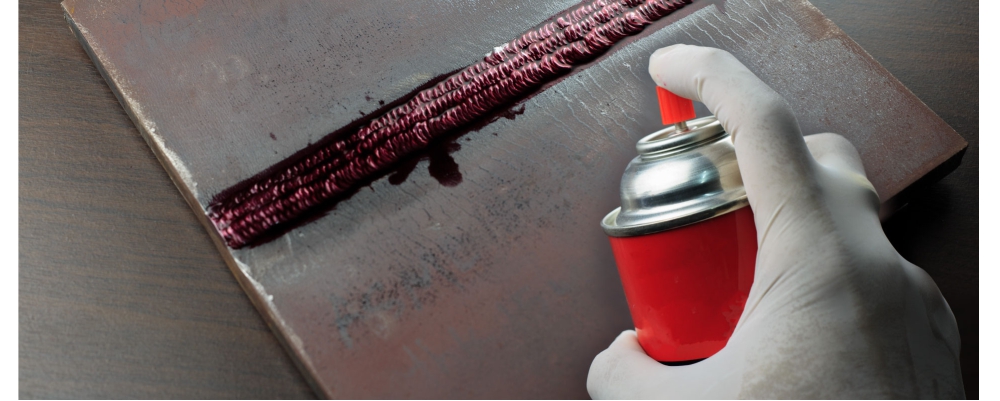Nondestructive testing (NDT) services:
Other Services:

Penetrant testing (PT)
Also called Liquid Penetrant Inspection (LPI) or Penetrant Testing (PT), is one of the oldest and simplest NDT methods.
Liquid penetrant inspection is used to detect any surface-connected discontinuities such as cracks from fatigue, quenching, and grinding, as well as fractures, porosity, incomplete fusion, and flaws in joints.
A highly penetrating dye on the surface will enter discontinuities after a sufficient penetration time, and after removing the excess dye with a developing agent, the defects on the surface will be visible.
Inspection steps:
- Pre-cleaning
- Application of Penetrant
- Excess Penetrant Removal
- Application of Developer
- Inspection
- Post Cleaning
Advantages:
High sensitivity (small discontinuities can be detected). Few material limitations (metallic and nonmetallic, magnetic and nonmagnetic, and conductive and nonconductive materials may be inspected). Rapid inspection of large areas and volumes. Suitable for parts with complex shapes. Indications are produced directly on the surface of the part and constitute a visual representation of the flaw. Portable (materials are available in aerosol spray cans) Low cost (materials and associated equipment are relatively inexpensive)
Disadvantages:
Only surface breaking defects can be detected. Only materials with a relatively nonporous surface can be inspected. Pre-cleaning is critical since contaminants can mask defects. Metal smearing from machining, grinding, and grit or vapor blasting must be removed. The inspector must have direct access to the surface being inspected. Surface finish and roughness can affect inspection sensitivity. Multiple process operations must be performed and controlled. Post cleaning of acceptable parts or materials is required.
Chemical handling and proper disposal is required.









